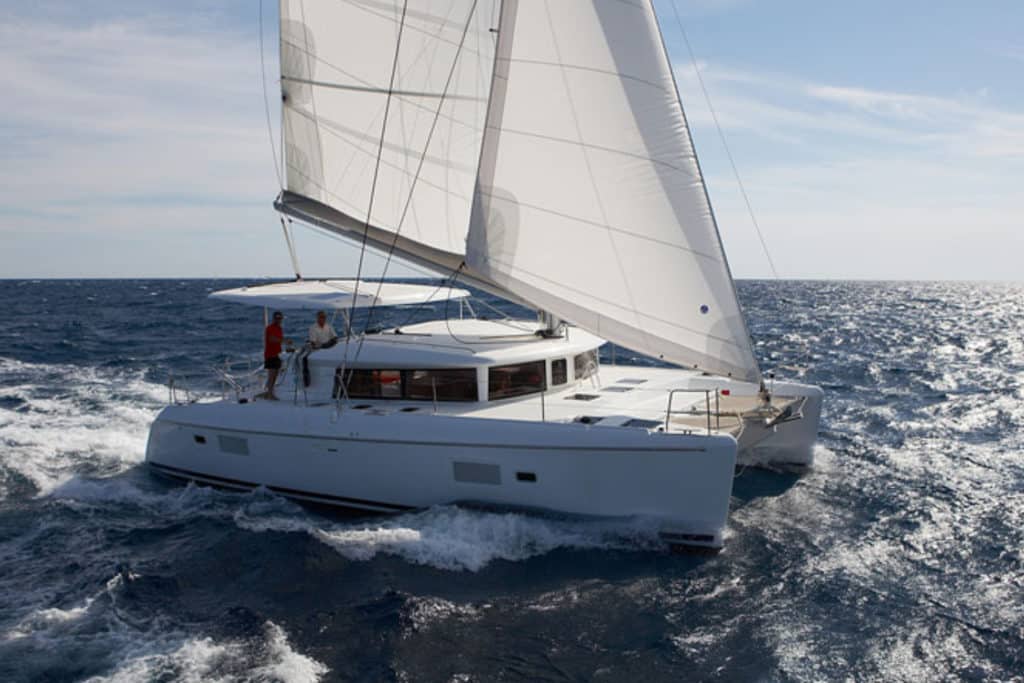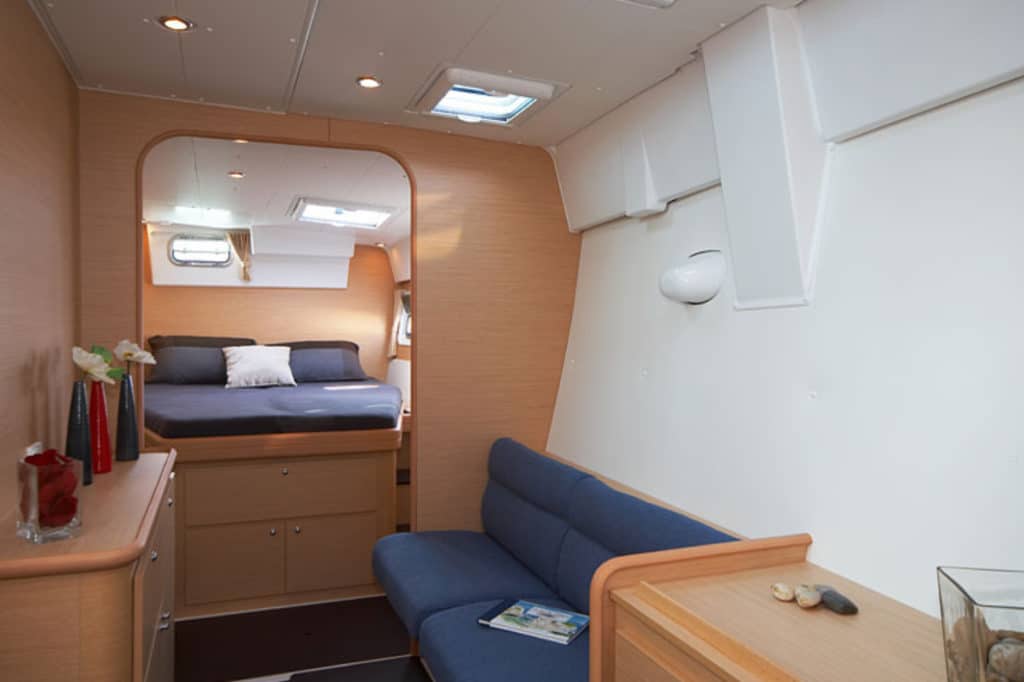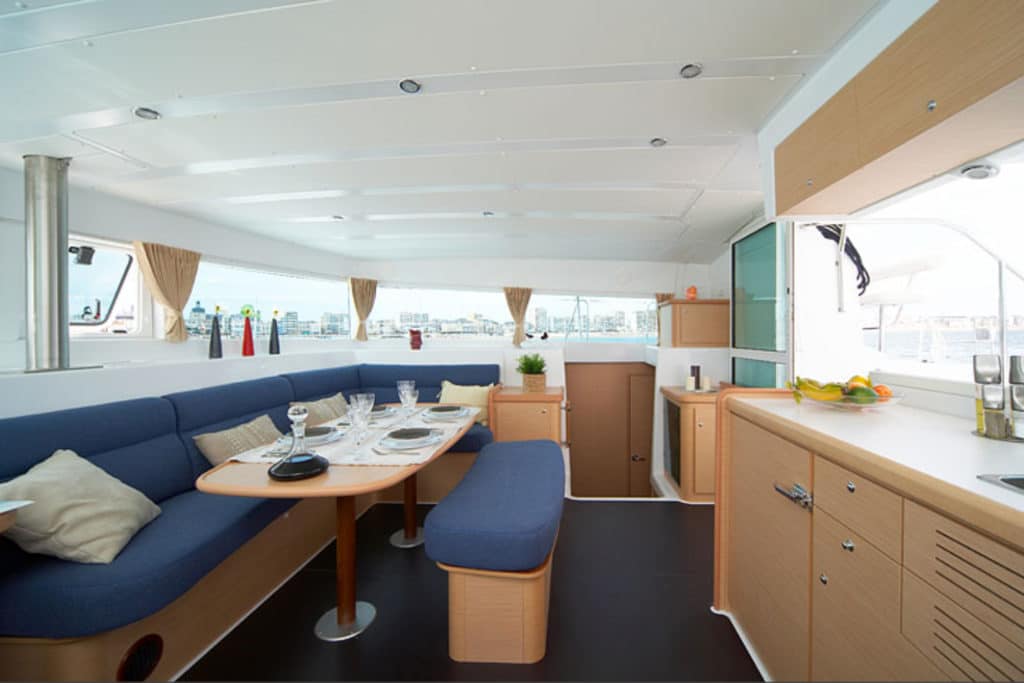
Given the disdain of the French for fast food, I hope Lagoon will forgive my suggesting that for its 420 catamaran, it borrowed Burger King’s “Have it your way” approach to pleasing customers.
The stylish 420 made its debut at the U.S. Sailboat Show in Annapolis in 2006 as the first hybrid-powered production sailboat and immediately caught the attention of buyers intent on going green. Rather than traditional diesels, the 420 Hybrid is powered by a pair of electric motors and a battery bank that can be recharged either by shore power, an onboard diesel generator, or by the boat’s propellers when sailing faster than 7 knots. For those not convinced that the time for hybrid power has arrived, the 420 is also available with 40-horsepower Yanmar diesels and saildrives.
But Lagoon hasn’t stopped there with its versatile and popular 420. At Strictly Sail Miami last winter, it introduced a third version, with a beefed-up power plant, for owners who might have considered a power cat. This latest iteration of the 420 sports twin 75-horsepower turbocharged Yanmars and saildrives. At a cruising speed of 2,200 rpm, we averaged 7.7 knots; wide open in shallow Biscayne Bay, we topped out at just under 9, though Lagoon America’s Nick Harvey said the boat should do at least a knot better in deeper water.
Sea trials conducted by Lagoon indicate that at cruising speed, the 40-horse engine uses .7 gallons of diesel an hour; it uses about 2 gallons wide open. Each of the 75s burns a little more than 1 gallon an hour cruising and just less than 4 gallons of diesel at full throttle.
Harvey said the opportunity to offer the 420 with various power options was designed into the boat’s twin hulls from the outset. Unlike the Lagoon 440, which has fairly narrow sterns, the hulls of the 420 carry a lot of beam aft to provide more buoyancy. The result is a boat that’s very maneuverable under power. When we were motoring in the channel just south of Miami, the 420 accelerated and stopped quickly, and on our return to the dock, a very competent captain impressed all as he parallel parked along a busy dock, moving the boat all but sideways.
The wind slept in on the morning of our test ride, so about all we could prove under sail is that the sails could be rolled, furled, raised, and dropped. But as on its hybrid cousin, the 420 turbo is well set up for sailing. All control lines are led to a starboard-side raised helm station. Winches include a pair of standard self-tailing Harkens for the jib sheets and a self-tailing electric winch for the main. It would be safe to assume that this boat, with some breeze, would turn in a respectable performance, as does the Hybrid.


The 420’s interior is fitted out with Lagoon’s new light-colored woodwork. Layouts include two double cabins in each hull, or an owner’s version with three staterooms.
So there you have it. From wind to turbo, as the French would say, “Chacun a son gout.”
Mark Pillsbury is Cruising World’s senior editor. Photos and a review of the 420 Hybrid appear on CW’s website (www.cruising
world.com/lagoon420).
Lagoon 420
LOA 41′ 4″ (12.6 m.)
LWL 40′ 4″ (12.29 m.)
Beam 24′ 7″ (7.49 m.)
Draft 4′ 2″ (1.27 m.)
Sail Area (100%) 809 sq. ft. (75.2 sq. m.)
Displacement 25,842 lb. (11,722 kg.)
Water 92 gal. (348 l.)
Fuel 79 gal. (299 l.)
Engines Twin 75-hp.
turbocharged Yanmars
Designer Marc Van Peteghem and
Vincent Lauriot Prevost
Price $500,000
Lagoon
(410) 280-2368
www.lagoonamerica.com








